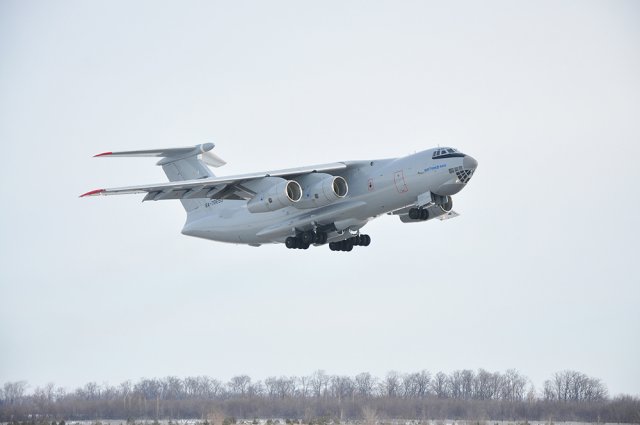| a | |||
|
|
|||
|
World Defense & Security Industry News - Zvezda
|
|||
|
|
|||
|
Zvezda about to start trials of Il-78M-90A's future UPAZ-1M refuelling pod
|
|||
|
Russian defense contractor Zvezda is gearing up for the preliminary trials of the advanced UPAZ-1M commonised refueling pod designed for the Ilyushin Il-78M-90A (NATO reporting name: Midas) airborne tanker, according to the press office of the United Aircraft Corporation (UAC).
|
|||
|
|
|||
 Russia's future aerial refuelling aircraft will be highly based on the Il-76MD-90A airlifter Russia's future aerial refuelling aircraft will be highly based on the Il-76MD-90A airlifter(Credit: Ilyushin) |
|||
|
|
|||
|
The Aviastar-SP aircraft production plant is completing the first upgraded Il-78M-90A (Il-478) tanker plane. In addition, Russia is developing a sophisticated refueling pod to outfit its strategic airborne tanker fleet for the first time over the past three decades. A whole range of parameters has placed the advanced Russian aircraft on a par with the latest widespread foreign-made refueling planes.
The Zvezda Scientific and Production Company named after Academician G.I. Severin is testing refueling pods with the use of specialized aerodynamic equipment. Mid-air refueling by means of Il-78 and Il-78M-90A aircraft is modeled on a test bed in real time. Rows of gas holders are sitting in a large area on the premises of the company. The huge reservoirs are filled with the air at a pressure of 6 atmospheres. Then, the wind tunnel simulates the operating conditions of the refueling pod for the duration of tests that usually last for two hours. Two smaller reservoirs simulate the operation of the fuel cells of the airborne tanker and the aircraft receiving fuel. Using a complex system of air and fuel lines, the refueling pod installed on a special indoor mount kicks in and refuels, with maximum realism, a simulated fuel receiver aircraft via a 30-m-long hose with the drogue. The air accumulated in the gas holders creates the airflow maximizing the realism of the refueling pod’s operation. After the tests in a wind tunnel, the pod is taken to the assembly shop for further development. In the 1970s, Zvezda developed the UPAZ commonised refueling pod. It was tested on an Il-38 (May) aircraft and then integrated with the Sukhoi Su-24 (Fencer), turning a tactical bomber into a light tanker plane. At the turn of the ‘80s, the UPAZ spawned a derivative designated as UPAZ-1. It was designed specifically for the Il-78. Most of the Zvezda-developed refueling pods were manufactured by the Tashkent Aircraft Production Association (TAPO) named after Valery Chkalov in the city of Tashkent. With the collapse of the Soviet Union, TAPO stopped making refueling systems. "The service life of the TAPO-made refueling pods started nearing the end in the later 2000s. The device’s production has to be restart by Russia. Our company took a certain risk by investing our own money into the design work and productionizing. This allowed the resumption of the production of the commonised refueling pod on our premises. Our company remains the holder of the unique competencies in this field," Zvezda Deputy Chief Designer for Research Victor Shibanov said. At present, Zvezda’s designers are completing the development of the refueling pod that will become the best in its class worldwide, according to chief specialist Vassily Yeliseyev. The UPAZ-1M features enhanced performance that is especially relevant for refueling large planes, e.g. strategic bombers and special aircraft that had to receive tens of thousands of liters of avgas in a limited time (about 20 min). A special air duct and a sophisticated turbine of the turbopump of the advanced refueling pod are designed to increase the fuel transfer rate. The UPAZ-1M’s up-to-date digital control system has simplified its design. The overwhelming majority of its electronic components and the principal element - the microprocessor - are Russian-made. Now, the refueling operator is able to check the pre-flight readiness of the device without having to leave his station on board the tanker. Refueling systems have become indispensable to combat aircraft and come in handy in boosting the capabilities of bombers and fighters. A next step is to expand the operational envelope of airlifters by means of the advanced refueling pod. In addition, Russian-made in-flight refueling systems are expected to equip unmanned aerial vehicles as well, according to UAC’s press office. |
|||
|
|
|||
|
© Copyright 2015 TASS. All rights reserved. This material may not be published, broadcast, rewritten or redistributed.
|
|||
















